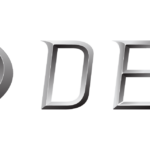The CHIPS and Science Act aims to bring semiconductor research & development and manufacturing back to U.S. soil. Not only will this make the U.S. less reliant on the international supply chain, but it is estimated that this investment in onshore semiconductor and research facilities will create over half a million new permanent jobs. This growing need to hire generates an amazing opportunity, possibly even a necessity, for companies to look beyond their traditional means of hiring and delve further into diversity and inclusivity to fill vacant positions.
While the CHIPS and Science Act itself includes initiatives to promote diversity, such as a National Science Foundation Chief Diversity Officer and demographic data collection standardization for national agencies, companies will need to think even bigger when it comes to diversity and inclusivity. And they’re in luck! Studies show that a diverse workforce improves profitability. For example, “those with more ethnically diverse executive teams are 33 percent more likely to outperform their peers on profitability. Similarly, companies with greater gender diversity among executive teams generated more profitability and value creation than companies with fewer women in executive positions”. Companies will need to address recruitment, hiring and retention strategies to not only allow, but encourage, a more diverse candidate pool with more diverse workplace needs.
Re-examine Job Descriptions and Requirements to Create a Diverse Workforce
Assuming that the education side is taken care of, a diverse workforce starts with recruiting. Before even looking for candidates, look at the job requisitions. It’s easy to get carried away describing a dream candidate but what is the bare minimum candidate? It may sound counterintuitive to look for a bare minimum candidate, but it widens the recruiting field to include a larger range of skills, knowledge, and backgrounds. It may involve a little more initial investment in training, but a diverse workforce improves problem-solving, which improves the company’s bottom line.
“[Earnings] for companies with diverse management teams were nearly 10% higher than for companies with below-average management diversity”. While reviewing job descriptions, check for any biased language, including coded words and phrases like “compassionate”, “decisive,” “energetic”, and “digital native” that strongly bias towards a particular group. This is also a great time to add a statement about the company’s commitment to diversity and inclusivity.
Look for Candidates in New Places
Once there are broader, more welcoming job requisitions, it’s time to put them in front of candidates. Traditionally, many companies have offered referral bonuses to get candidates that have already been vetted by current employees. This is a cost-effective way to find “cultural fits” that don’t need large training plans; however, this severely limits the ability to increase diversity.¹
While it is impractical to do away with referral programs entirely, it is important to look for candidates in places that would otherwise not be reached. Professional organizations and programs targeted at demographics who are underrepresented in the industry, such as the Society of Women Engineers, National Society of Black Engineers, American Indian Science and Engineering Society, and The Mom Project may be a good starting point for recruitment across a more diverse candidate field.
Re-examine Your Hiring and Onboarding Processes
Once the candidate pool is diversified, it’s time to take a hard look at the hiring process. According to Glassdoor, “76% of job seekers and employees report that a diverse workforce is an important factor when evaluating companies and job offers.” Again, it’s important to remove coded and biased language from any actual interview questions. It’s also important to remove any rating of a “cultural fit”; when starting to diversify. The goal is specifically to hire outside the current culture of the company. While the idea of work being akin to partying with friends sounds fun, hiring based on “someone you’d like to have a beer with” is unlikely bring a huge diversity.
Beyond the questions themselves, companies can offer additional flexibility within the interview process to demonstrate their commitment to diversity by servicing diverse needs. Allowing candidates some say in the timing, the location (online or onsite), and the formality will allow a broader group of candidates to feel comfortable coming into the interview process.
A little-addressed aspect of retaining a diverse workforce is onboarding. Moving into a more diverse and inclusive workforce means that not everyone has the same background or the same assumptions. This can be a cause of “poor cultural fit” issues, along with other performance-related issues. Good onboarding is an opportunity to clearly state assumptions like core work hours, flexible scheduling, dress code, and even the preferred manner of setting up your Outlook calendar or email signature.
Explicitly stating minor cultural choices within an employer can help level the playing field and create an inclusive work environment as it removes unmet, unspoken expectations. This may also be an opportunity to check for bias in these previously unspoken preferences.
Make Them Want to Stay
Finally, the goal is to retain employees for as long as possible. While initial recruiting has a focus on diversifying the candidate pool, retention relies on the equity and inclusivity portion of DE&I. Traditional benefits only go so far; a new set of employees may be better retained with broader benefits.
Looking beyond equality of benefit, ask “What can a company do to provide equal ability for all employees’ ability to achieve success?” Caregiving leave, childcare, and flexible work schedules can make a huge impact. According to a Microsoft UK study, over two-thirds of their staff wanted flexible work hours.9
Beyond formal benefits, career development and advancement opportunities are extremely important. Equity comes into play here. Having the equal opportunity to apply to attend a conference does not mean that opportunities are ever given to all employee groups. Employee resource groups and demographic tracking can help promote equity beyond simple equality of opportunity for career development.
In the end, competitive benefits for a truly diverse group may involve creative thinking, data tracking, and even surveys to determine the missing pieces. The CHIPS and Science Act not only brings about funding opportunities for onshore technology development but also an opportunity to bring about meaningful diversity initiatives. To find and retain a more diverse set of employees, companies will need to address not just recruiting and hiring practices, but also onboarding and overall retention benefits. This involves both explicit data collection as well as monitoring for implicit bias in wording, training, and benefits needs. While the initial investment may seem burdensome, studies have shown that a more diverse set of employees brings both creative and financial benefits.
This article on building a diverse workforce first appeared in the 2023 3D InCites Yearbook. Read the issue here.
References
[1] SHRM, “Do employee referral programs negatively affect diversity in the workplace?,” Society for Human Resource Management (SHRM), 2022. [Online].

Jessica Grafeen is a hardware design engineer at Tektronix. She also serves as Adjunct Faculty at Portland State University. Previously, Jessica held the role of Hardware Engineer at APCON where she heavily influenced hiring and onboarding. Jessica is involved in the Society of Women Engineers and Tektronix’s Women in Technology. Jessica has an MS in Electrical and Computer Engineering from Portland State University.




















